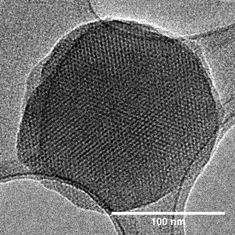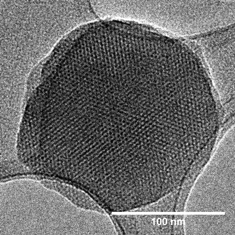Periodic Mesoporous Organosilica Nanoparticles for drug Delivery
Research project of Sireen Al Khawand, student in Nanochemistry, at Institut Neel Grenoble.
Periodic mesoporous organosilica nanoparticles (nanoPMOs), obtained by the hydrolysis-condensation of bridged organo-bis(triethoxysilanes) have found promising application for drug delivery, but have only scarcely been developed compared to their parent mesoporous silica nanoparticles.1 NanoPMOs possess an organized porous network with elevated specific surface area (>500 m²/g) and pore volume (ca 1 cm3/g). They may be superior to silica in drug delivery as they feature a higher hydrophobicity, enabling higher drug loading capacity. They can also be made degradable when cleavable linkers are introduced in their organic substructure.2 However, further development in the use of nanoPMOs is hampered by the lack of general synthesis method, and by the lack of knowledge on the mechanism of their formation.
According to his/her expertise, the intern will develop new organosilanes to prepare tailor-made nanoparticles with targeted functionalities. A fine understanding of the nanoPMO formation mechanism and pore symmetry is also worth being studied,3 as well as the development of new ways of degradation. Finally, the preparation of core-shell structures or pore-expended nanoPMOs would also offer very interesting perspectives for application in nanomedicine.
1 J. G. Croissant, X. Cattoën, M. Wong Chi Man, J.-O. Durand and N. M. Khashab, Nanoscale, 2015, 7, 20318–20334.
2 J. Croissant, X. Cattoën, M. Wong Chi Man, A. Gallud, L. Raehm, P. Trens, M. Maynadier and J.-O. Durand, Adv. Mater., 2014, 26, 6174–6180.
3 B. Guan, Y. Cui, Z. Ren, Z. Qiao, L. Wang, Y. Liu and Q. Huo, Nanoscale, 2012, 4, 6588–6596.
Published on October 15, 2021
Updated on May 19, 2024

